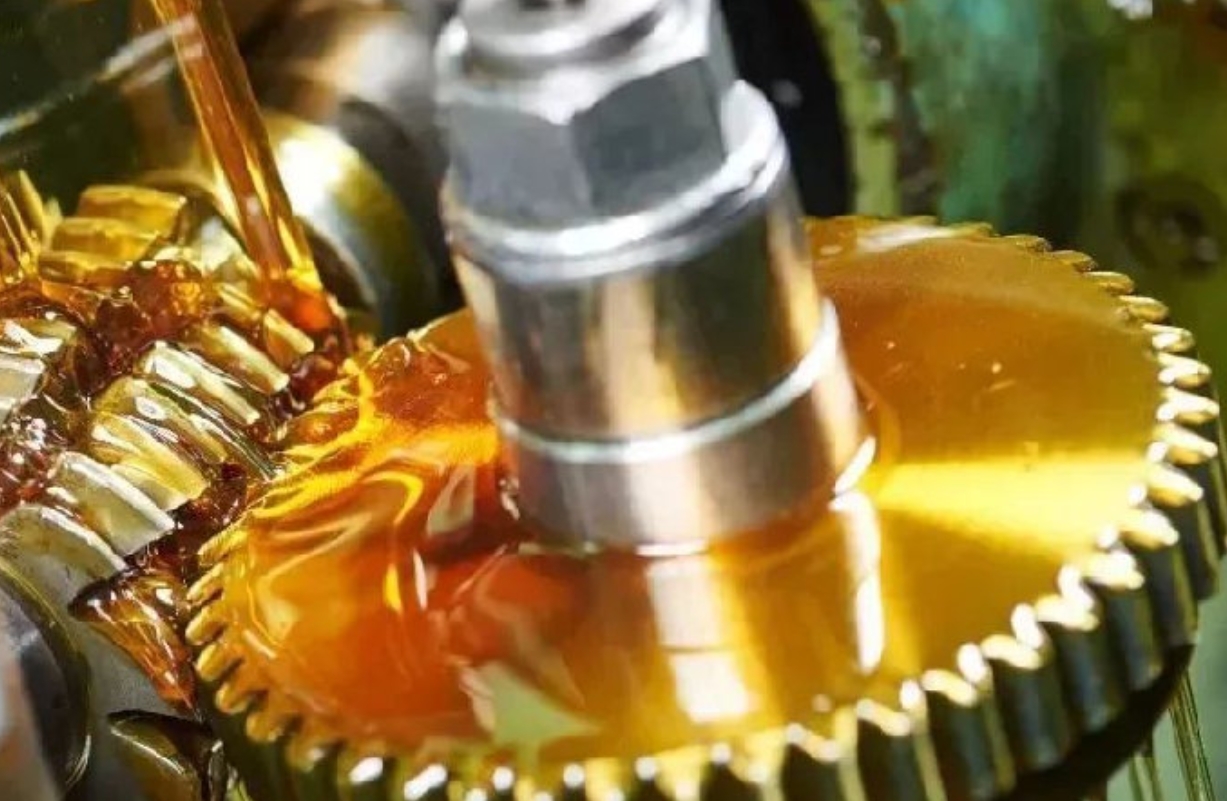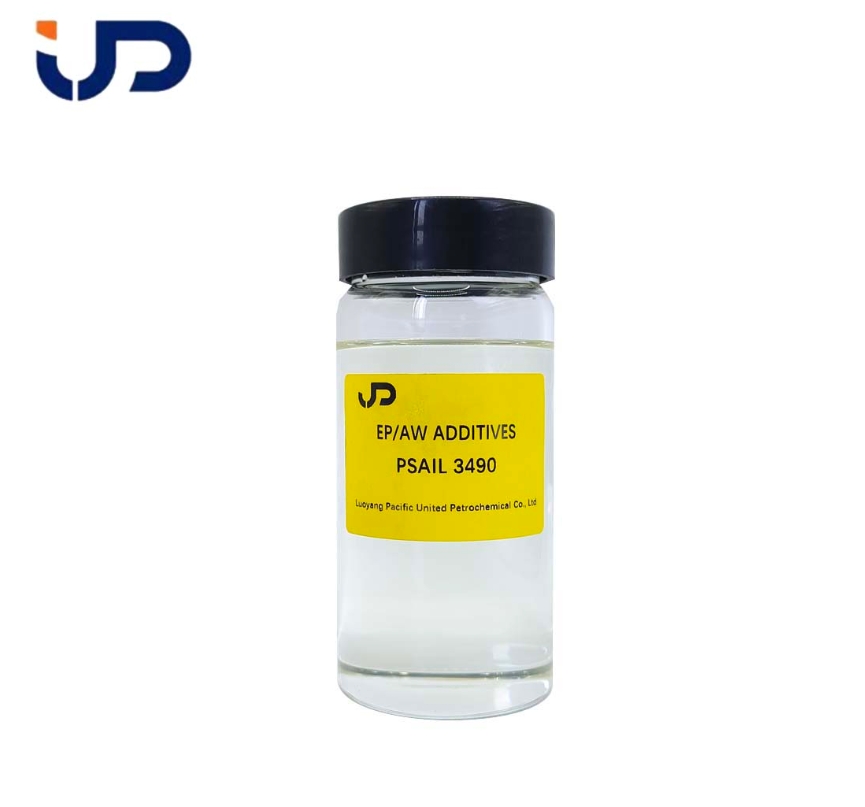
Lubricating oil extreme pressure anti-wear additive effectively improves industrial efficiency
In industrial production, friction and wear are widespread phenomena, causing huge losses. To reduce these losses and improve the operational efficiency of mechanical equipment, various lubricant additives have been developed. Among them, extreme pressure and antiwear additives have become an indispensable and important component due to their unique properties.
What is an extreme pressure and antiwear additive?
Extreme pressure anti-wear additive (aka. EP/AW additive) refers to the additives used to prevent scratching, biting, wear and sintering fusion welding, suitable for high-speed, high temperature and high load and other harsh working conditions in the lubrication environment.In boundary lubrication, when the metal surface only bears a medium load, if there is an additive that can be adsorbed on the metal surface or undergo severe wear with the metal surface, this additive is called an antiwear additive. When the metal surface bears a very high load, a large amount of the metal surface is in direct contact, generating a large amount of heat, and the film formed by the antiwear additive is also destroyed and no longer protects the metal surface. If there is an additive that can undergo a chemical reaction with the metal surface to form a chemical reaction film, which plays a lubricating role and prevents the metal surface from being scratched or even welded, this most demanding boundary lubrication is usually called extreme pressure lubrication, and this additive is called an extreme pressure additive.
In the traditional lubrication theory, lubrication is divided into fluid lubrication and boundary lubrication. When the two metal surfaces in relative motion are completely separated by the lubricating oil film without direct metal contact, this lubrication state is called fluid lubrication. As the load increases, the oil film thickness between the metal surfaces gradually decreases. When the load increases to a certain extent, the continuous oil film is destroyed by the peaks of the metal surface, resulting in local direct contact between the metal surfaces. This lubrication state is called boundary lubrication.
The working principle of extreme pressure and antiwear additives:
- Chemical reaction principle:
The active elements in the extreme pressure and antiwear additive undergo a chemical reaction with the oxides and nitrides on the metal surface to form low-temperature stable sulfides, phosphides, or chlorides. These compounds have a high melting point and good wear resistance, and can form a solid protective film with a low shear strength on the metal surface. This protective film can effectively prevent direct contact and wear between metals, thereby extending the service life of the friction parts.
- Soft film principle:
Under high temperature and high pressure conditions, the sulfur-containing extreme pressure and antiwear additive can form a layer of sulfide soft film. This soft film has excellent filling and smoothing capabilities, can fill the microscopic unevenness of the metal surface, reduce the surface roughness, thereby reducing the contact area and frictional resistance between metals. This soft film also has good elasticity and toughness, and can play a buffering role when the metal surface is subjected to impact or extrusion.
- Lubrication principle:
The extreme pressure and antiwear additive can also form a lubricating film on the metal surface, reducing the friction coefficient and frictional force between metals. This lubricating film not only separates the metal surfaces, reducing friction and wear, but also prevents the corrosion and oxidation of the metal surface. Under extreme pressure conditions, the lubricating film can maintain its stability and integrity, thereby ensuring the normal operation of mechanical equipment.
- Surface cushion principle:
When the extreme pressure and antiwear additive is added to the lubricating oil, it will form a strongly adhesive cushion layer on the metal surface. This cushion layer can slow down the relative sliding speed between metals, thereby reducing friction and wear. In addition, the cushion layer can also play an isolation and buffering role to prevent wear and sintering of the metal surface due to direct contact.
- Permeability principle:
The extreme pressure and antiwear additive has a certain permeability in the lubricant and can enter the microscopic depressions on the metal surface to fill and lubricate the microscopic unevenness of the metal surface. This permeability not only helps to reduce the contact area and frictional resistance between metals, but also improves the lubricating performance and anti-wear ability of the lubricating oil.
Types of extreme pressure and antiwear additives
The types of extreme pressure and antiwear additives can be divided into sulfur-containing extreme pressure and antiwear additives, phosphorus-containing extreme pressure and antiwear additives, chlorine-containing extreme pressure and antiwear additives, borate extreme pressure and antiwear additives, and organometallic salt extreme pressure and antiwear additives, etc.:
- Sulfur-containing extreme pressure and antiwear additives:
Sulfur-containing extreme pressure and antiwear additives are first adsorbed on the metal surface. With the intensification of friction, the instantaneous temperature at the metal contact increases, causing the oil film to rupture. At the same time, the metal surface and the organic sulfide undergo a chemical reaction to form a load-bearing metal sulfide film.
- Phosphorus-containing extreme pressure and antiwear additives:
Phosphoric esters and other phosphorus-containing extreme pressure and antiwear additives have been used earlier. Their antiwear mechanism is first adsorbed on the metal surface, and then hydrolyzed to form acidic phosphate esters, which form organometallic phosphate with the metal. Finally, under extreme pressure friction conditions, it is further hydrolyzed to form an inorganic metal phosphite film, thereby playing an extreme pressure and antiwear role. Phosphoric esters, alkyl phosphites, acidic phosphates, thiophosphate amine salts, and acidic phosphate amine salts are widely used in phosphorus-containing extreme pressure and antiwear additives.

- Chlorine-containing extreme pressure and antiwear additives:
Chlorine-type extreme pressure and antiwear additives have a wide source, low price, and good performance, and have good compatibility with S and P. Its mechanism of action is that on the one hand, the atomic chlorine released by the thermal decomposition of the chlorine compound on the friction pair surface first generates HCl, and then reacts with the metal to form a low-melting-point and easily sheared reaction film such as FeCl₂ and FeCl₃, thereby playing the role of extreme pressure and antiwear. On the other hand, when the chlorine compound encounters water, it hydrolyzes into free HCl, which is easy to corrode the metal, so it is not suitable to use in the presence of water.
Significance of extreme pressure and antiwear additive
The significance of extreme pressure and antiwear additives is that they are an important additive. Under normal circumstances, chlorine and sulfur types can improve the load-bearing capacity of the lubricating grease to prevent sintering, seizure, and scratching of the metal surface under high load conditions; while phosphorus and organometallic salt types have a higher antiwear ability to prevent or reduce the wear of the metal surface under medium load conditions. In practical applications, it is better to mix different types of extreme pressure and antiwear additives in a certain proportion to achieve better performance. By using the antiwear properties of general phosphides and the extreme pressure properties of chlorides and sulfides, the additive contains both chlorine, phosphorus or sulfur compounds, thereby having both extreme pressure and antiwear properties.
Professional Lubricant Additive Manufacturer
UNPChemicals, aka Luoyang Pacific United Petrochemical Co., Ltd., focuses on the application and development of special lubricating grease additives such as MODTC, MODTP, molybdenum amide, thiadiazole metal deactivators, and phosphate esters. With nearly 30 products in seven series, including extreme pressure anti-wear additives and special grease additives, it is a global manufacturer of special lubricating grease additives and a national high-tech enterprise with great influence and leading role in the industry. If you are looking for EP/AW additives or technical information, feel free to contact UNPChemicals.